Minister of Export Promotion, International Trade and Economic Development appearance before the Senate Committee on Foreign Affairs and International Trade (AEFA) on Bill C-57, An Act to implement the 2023 CUFTA – Issue notes
February 29, 2024
Published: June 20, 2024
Table of Contents
- Committee Context and Remarks
- Current Themes of Interest
Scenario note
Minister of Export Promotion, International Trade, and Economic Development
Appearance before the Senate Standing Committee on Foreign Affairs and International Trade (AEFA)
February 29, 11:30 a.m.-12:30 p.m. ET (8:30-9:30 p.m. Abu Dhabi Time)
Virtual Meeting (Zoom)
Context
- One-hour virtual appearance before the AEFA committee on Bill C-57 (Modernized CUFTA).
- Bill C-57 received four speeches at Second Reading in the Senate, from February 13-15, including from Senate Sponsor, Peter Harder (PSG, ON) and designated Senate Opposition Critic Senator Michael MacDonald (CPC, NS) (both AEFA members), as well as Independent Senators Ratna Omidvar (ON) and Stan Kutcher (NS).
- Overall tone of speeches at Second Reading has been supportive of the treaty and the bill.
- You are appearing at the second meeting on the study of Bill C-57. At the first meeting on Wednesday, February 28, the committee heard from H. E. Yuliya Kovaliv, Ukraine’s Ambassador to Canada, and industry and business stakeholders.
Objective
Minister Mary Ng to provide opening remarks and field questions from Senators as part of the study of C-57, Modernized CUFTA Implementation Act
Logistics
Visibility: This meeting will be televised on ParlVu.
Technical Elements:
- The meeting will take place on Zoom and in-person. For those attending remotely:
- Senate IT will need to conduct a technical test at least 72 hours before the meeting.
- Per House of Commons and Senate protocol, an appropriate headset is required in order to participate in the meeting (your office has been provided with a headset for your use).
Departmental representatives:
Virtual:
- TFM/Bruce Christie, Assistant Deputy Minister, Trade Policy and Negotiations; Chief Trade Negotiator for CUFTA
In-Person:
- TCE/Dean Foster, Director, Trade Policy and Negotiations – Europe, Middle East, Africa; Deputy Chief Trade Negotiator for CUFTA
- TMV/Vincent Boulanger, Deputy Director, Investment Trade
- JLTB/Adam Douglas, Senior Counsel and Deputy Director, Investment and Services Law
- TPZ/Nadine Nickner, Director OR Shawn Morton, Deputy Director, Procurement, Trade, and Environment
Run of show:
- AEFA Chair, Senator Peter Boehm opens meeting.
- Minister of International Trade to provide brief opening remarks (5-8 minutes).
- Chair proceeds to rounds of questions in the order that Senators present register their interest with the Chair.
- To note: Participation at Senate Committee is not limited to committee members, any Senator can attend and ask questions as ex officio members, should they wish.
- After the hour of questions has elapsed, the chair will recess briefly to allow the Minister to log off. The committee is then expected to consider the legislation clause-by-clause in the remaining hour of the meeting.
Areas of possible lines of questioning:
Based on speeches delivered at Second Reading in the Senate, questions on the following topics can be expected:
- Generally, questions will likely focus on technical aspects of the treaty and concrete outcomes for Canadian businesses and/or new market access, particularly as a result of the new and updated chapters of the agreement.
- The Environment Chapter, specifically the “carbon pricing” language.
- Opportunities for Canadian export of Liquified Natural Gas.
- Opportunities in the modernized agreement to address trade deficits under the 2017 agreement.
- Possibility for greater military support for Ukraine.
- Any impacts to Canada’s supply-managed sector as a result of the Modernized CUFTA
- AEFA member Senator Amina Gerba (PSG, QC) is the Senate sponsor of BQ Private Member’s Bill C-282 (An Act to Amend the Department of Foreign Affairs, Trade, and Development Act (Supply Management)).
Senate Committee Address - Opening Remarks
Implementation of the Modernized Canada-Ukraine Free Trade Agreement (CUFTA)
February 29, 2024
Good day, Mr. Chair and Honourable Senators.
It is always a pleasure to appear before you and support your important work – and I am especially pleased to be here to speak about an important and long-planned development in the Canada-Ukraine bilateral trade relationship, namely the modernization of the Canada-Ukraine Free Trade Agreement (CUFTA) and its mutually beneficial outcomes for both countries.
First, I would like to acknowledge that the lands on which we are gathered and where I am speaking to you today are part of the unceded traditional territory of the Anishinaabe Algonquin people.
Mr. Chair, Honourable Senators, as you know, Bill C-57, or An Act to implement the 2023 Free Trade Agreement between Canada and Ukraine, has passed Third reading at the House of Commons and is now in front of you for your consideration.
Honourable Senators, let me please reiterate that this modernized trade Agreement represents an historic milestone in the Canada-Ukraine commercial relationship and is a clear demonstration of Canada’s steadfast and unwavering support to Ukraine in the face of Russia’s illegal and unjustified invasion.
Canada and Ukraine have enjoyed close bilateral relations since 1991, when Canada became the first Western country to recognize Ukrainian independence. These bilateral relations are strengthened by shared values and strong people-to-people ties rooted in the Ukrainian-Canadian community of approximately 1.3 million people.
In recent years, our bilateral relationship has been marked by Canada’s support for Ukraine’s sovereignty, independence, and territorial integrity, both since Russia’s invasion of Crimea in 2014, and in more recently in response to Russia’s full-scale invasion in 2022.
Since 2014, the Government of Canada has provided roughly $9.7 billion in multifaceted support, spanning diplomatic, humanitarian, military, and financial lines.
The modernized CUFTA is the latest demonstration of Canada’s unwavering support.
The original CUFTA, which entered into force in 2017, was comprehensive from a trade-in-goods perspective but did not include chapters on services, investment, inclusive trade, or other provisions that Canada now often seeks in its modern FTA model.
As a result, in July 2019, Ukrainian President Zelenskyy and Prime Minister Trudeau announced plans to modernize the Agreement to add these chapters.
Following delays due to COVID-19, my Ukrainian counterpart, First Deputy Prime Minister and Minister of Economy Yulia Svyrydenko, and I announced the launch of modernization negotiations in January 2022.
Sadly, less than one month later, Russia began its full-scale invasion of Ukraine, which forced a pause in discussions. Then in May 2022, Minister Svyrydenko conveyed to me her government’s readiness to initiate, and indeed expedite, negotiations to strengthen the bilateral relationship, and support Ukraine’s long-term economic and trade interests.
She further shared the value Ukraine places on its relations with Canada, particularly with respect to our firm recognition of and long-term confidence in Ukraine as a sovereign and independent partner.
In June 2022, Canadian and Ukrainian trade officials set to work, and despite several delays due to Russian attacks on Ukraine’s energy and communications infrastructure, our teams completed negotiations for a modern, high-standard FTA in April 2023.
The conclusion of negotiations was announced by Prime Minister Trudeau and Ukrainian Prime Minister Shmyhal on April 11, 2023, during a visit to Toronto.
Over the summer months, officials undertook mandatory preparations for the Agreement’s implementation, ratification and entry into force, including the completion of a legal review and translation of the treaty text into French and Ukrainian.
Recently, the landmark initiative came full circle: Prime Minister Trudeau and President Zelenskyy signed the final, modernized CUFTA in Ottawa last September, just over four years since President Zelenskyy and Prime Minister Trudeau first announced their intention to modernize the Agreement.
Honourable Senators, if I may, I would like to say a few words about this historic Agreement, which is a highly ambitious and comprehensive deal with commitments on par with those contained in some of Canada’s most state-of-the-art agreements such as the CUSMA and the CPTPP.
Canada and Ukraine have added 9 new dedicated chapters, including on cross-border trade in services, investment, financial services, telecommunications, and good regulatory practices.
The Agreement also includes new dedicated chapters on inclusive trade, including trade and gender, our first trade and Indigenous Peoples chapter in a concluded FTA, and trade and small and medium-sized enterprises, to ensure that the opportunities and benefits of the Agreement are widely shared.
We have also expanded and improved 9 chapters from the existing Agreement, including on rules of origin and origin procedures, digital trade, competition policy, designated monopolies and state-owned enterprises, labour, environment, and transparency, anti-corruption, and responsible business conduct.
Ultimately, the outcome of these chapters is a modern, ambitious, and fully comprehensive FTA that will underpin the Canadian-Ukrainian bilateral commercial relationship for years to come and will support Ukraine’s long-term recovery and trade interests.
In fact, by serving as a demonstration of Ukraine’s ability to adhere to ambitious commitments in a range of areas, our Ukrainian counterparts have affirmed the value this Agreement will have as a new model for its efforts to advance economic integration with other partners around the world.
Furthermore, this Agreement provides a strong bilateral legal framework to support and encourage Canadian firms to initiate and expand their operations in Ukraine, and for Canada to participate in Ukraine’s reconstruction and longer-term recovery.
In January, I participated in a tour of Western Canada, where I met with many Ukrainian-Canadians and spoke about the modernized CUFTA. It was clear to me that there is interest from the Canadian private sector to support Ukraine and with the modernized CUFTA, we are doing just that. By creating opportunities for these Canadian companies through trade, we are facilitating their contribution to Ukraine’s reconstruction.
As I announced when I tabled the modernized CUFTA and Bill C-57 in the House of Commons, I am also planning to lead a business mission to Ukraine. This mission will build on the momentum of the modernized CUFTA to create new connections between Canadian and Ukrainian businesses to build a stronger, better future for all.
Honourable Senators, I thank you again for your interest in this historic Agreement. I am pleased to be joined here today by the Canadian trade officials who helped to bring this initiative to life. With their support, I stand ready to discuss and respond to any questions raised by the Committee.
Thank you.
AEFA Members’ Biographies
Peter M. Boehm (Chair)
Independent Senators Group – Ontario
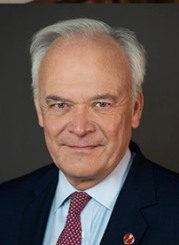
Appointment to the senate
- October 3, 2018
Professional background
- Studies: Ph.D in History from the University of Edinburgh, a Master's degree in International Affairs from the Norman Paterson School of International Affairs at Carleton University, and a Bachelor's degree in English and History from Wilfrid Laurier University.
- Public Servant: Various positions at Global Affairs from 1983 – 2018, including: Deputy Minister for the G7 Summit, Deputy Minister of International Development, Senior Associate Deputy Minister of Foreign Affairs, Canadian Ambassador to Germany, and Ambassador and Permanent Representative to the Organization of the American States.
Political and parliamentary roles
- Senate group: Independent Senators Group (November 3, 2018 – Present)
- Member: Canadian NATO Parliamentary Association (2018 – Present)
Committee membership
- Chair: Standing Senate Committee on Foreign Affairs and International Trade (2020 – Present)
- Member: Standing Senate Committee on National Security and Defence (2018 – Present); Standing Senate Committee on National Finance (2018 – Present); Standing Senate Committee on Foreign Affairs and International Trade (2018 – Present)
- Former Member: Standing Senate Committee on Aboriginal Peoples (2018 – 2019); Standing Senate Committee on Internal Economy, Budgets and Administration (2019 – 2020); Committee of Selection (2019 – 2020)
Recent points of interest
Ukraine:
- During that same meeting in June 2022, Senator Boehm asked if Canada has a plan to look at the long-term assistance that Canada could provide to Ukraine from a post-hostility perspective.
- At a Senate Standing Committee on National Finance meeting in June 2022, Senator Boehm asked for details regarding the distribution of the $500 million in terms of stocks, new acquisitions and direct transfers to Ukraine.
Peacekeeping:
- During Senate debate, Question Period, and Committees, Senator Boehm frequently highlights the importance of United Nations peacekeeping missions. From his perspective, the UN's role is to maintain international peace and security, by working to prevent conflicts, and by working proactively to lay the foundations for peace.
GAC ‘Fit For Purpose’:
- During the March 2023 visit to 125 Sussex, Senator Boehm underlined that the committee has heard a lot of emphasis on human resources and the need for consistent recruitment. He also suggested that parliamentary diplomacy could be better leveraged.
- In November 2022, Senator Boehm asked Minister Sajjan whether the Government finds time to have comparative discussions with counterpart organizations like USAID and FCDO around what is working and what isn’t for their respective organizations.
- During this study, he has repeatedly questioned other government departments on whether they are using GAC’s training center for their personnel working abroad.
Other interests
Indigenous Relations
- During a Senate debate on Bill C-15 (An Act respecting the United Nations Declaration on the Rights of Indigenous Peoples) in 2021, Senator Boehm expressed his support for Indigenous Peoples, and the importance of ensuring their meaningful inclusion in Canadian society.
Peter Harder (Vice-Chair)
Progressive Senate Group – Ontario
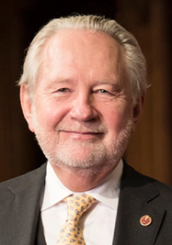
Appointment to the senate
- March 23, 2016
Professional background
- Studies: Bachelor’s degree in Political Science
- Public Service: 30 years of experience in the Federal Public Service, including in the departments of immigration, public safety, industry, the treasury board and foreign affairs.
- Immigration: Senator Harder served as the founding Executive Director of the Immigration and Refugee Board.
- Foreign Services/GAC: He joined the Foreign Service in 1977; Deputy Minister of Foreign Affairs and International Trade (2003 – 2007)
Political and parliamentary roles
- Senate groups: Independent (2016 – 2020); Progressive Senate Group (2020‑ Present)
- Leader of the Government in the Senate (2016 – 2020)
Committee membership
- Deputy Chair: Standing Committee on Foreign Affairs and International Trade (2020 – Present)
- Member: Special Joint Committee on the Declaration of Emergency (2022 ‑Present); Standing Committee on Ethics and Conflictof Interest for Senators (2020 – Present); Standing Committee on Legal and Constitutional Affairs (2020-‑ Present)
- Former Member: Standing Committee on National Finance (2019 – 2020); Standing Committee on National Security and Defence (2019 – 2020); Standing Committee on Transport and Communications (2020 – 2022); Standing Committee on Human Rights (2021 – 2022); Standing Committee on Social Affairs, Science and Technology (2021-‑ 2022)
Recent points of interest
Humanitarian Aid:
- Senator Harder closely follows humanitarian operations, and regularly asks questions about the logistics, resources and results of these operations.
Ukraine:
- In March 2022, Senator Harder asked the Government Representative in the Senate what means Canada is considering support to military efforts and combatants in Ukraine other than a no-fly zone.
COVAX:
- In December 2021, Senator Harder criticized the fact that while Canada promised 51 million doses to COVAX out of its own surplus of stock and through bilateral donations, only about 10 million of those vaccines had been delivered.
GAC ‘Fit For Purpose’:
- In October 2022, Senator Harder stated that locally engaged staff are an important element of our international footprint and inquired about their recruitment, role, security issues, and how they are managed.
- In November 2022, he asked about the inter-pollination of human resources between GAC and DND, and whether there have been recent lessons from a kinetic and policy perspective.
Gwen Boniface
Independent Senators Group – Ontario

Appointment to the senate
- November 10, 2016
Professional background
- Police/Security: Served internationally for 10 years, including as Deputy Chief Inspector of Ireland’s Garda Síochána Inspectorate tasked with reforming Ireland’s national Police Service, as a Transnational Organized Crime Expert with the United Nations Police Division and as Deputy Executive Director of the International Association of Chiefs of Police.
- Commissioner: Served with Law Commission of Canada for 5 years as a Commissioner.
- Indigenous: Initiated a truth and reconciliation project in her home community of Orillia in 2019 with Indigenous and non-indigenous members.
Political and parliamentary roles
- Senate group: Independent Senators Group (2016 – Present)
- Member: Canada-Europe Parliamentary Association (2017 – Present); Canadian Delegation to the Organization for Security and Cooperation in Europe Parliamentary Assembly (2017 – Present)
Committee membership
- Co-Chair: Special Joint Committee on the Declaration of Emergency (2022 – Present)
- Member: Standing Senate Committee on Foreign Affairs and International Trade (2020 – Present); Special Joint Committee on the Declaration of Emergency (2022 – Present); Standing Committee on National Security and Defence (2017 – Present); Standing Committee on Legal and Constitutional Affairs (2017 – Present); Standing Committee on Rules, Procedures and the Rights of Parliament (2021 – Present)
- Former Chair: Standing Committee on National Security and Defence (2020 – 2021)
Recent points of interest
GAC ‘Fit For Purpose’:
- During the March 2023 visit to 125 Sussex, Senator Boniface asked whether, in consultations with other countries, GAC has found they are facing the same issues and hurdles related to human resources.
- In June 2022, the Senator stated that the Foreign Service has a risk-averse culture and she asked how to rebuild an organization in a way that actually values contrary views.
- Duringthis study, she has demonstrated an interest in the Government of Canada’s footprint abroad.
- Sanctions Against Russia:
- In June 2022, Senator Boniface asked if sanctions that Canada and its allies have put on Russia are affecting the Russian economy and the Russian people and if there is evidence that suggests international sanctions are producing a behavioural change in the Russian regime.
Unfair Trade Practice:
- At an AEFA meeting in May 2022, Senator Boniface wanted to know how the CBSA and the CITT investigate instances in which imports are being dumped or subsidized and if these practices have caused injury to Canadian producers.
Other interests
Defence & Security:
- With a background in law enforcement, Senator Boniface has a special interest in security issues, particularly those related to human trafficking and CBSA-related work.
Mary Coyle
Independent Senators Group – Nova Scotia (Antigonish)

Appointment to the senate
- December 4, 2017
Professional background
- Studies: Bachelor’s degree in in languages and literature with a major in French and a minor in Spanish and a Master’s degree in rural planning and development.
- Rural Development: She subsequently worked as a Rural Development Advisor in Indonesia and later to support two State Islamic Universities develop their community engagement strategies.
- Involvement: Vice President and Director of the school’s Coady International Institute (1997 – 2014); Executive Director of the Frank McKenna Centre for Leadership (2014 – 2017)
Political and parliamentary roles
- Senate group: Independent Senators Group (2018 – Present)
Committee membership
- Member: Standing Committee on Foreign Affairs and International Trade (2019 -‑ Present); Standing Committee on Indigenous Peoples (2017 – Present);
- Former Member: Standing Committee on Transport and Communications (2020 – 2022)
Recent points of interest
GAC ‘Fit For Purpose’:
- During the March 2023 visit to 125 Sussex, Senator Coyle asked for more information around the Department’s Future of Diplomacy work and how much of the input into it is coming from internal vs external.
- On March 9, 2023, she noted that Canada has had 15 foreign ministers in the past 22 years, and expressed the view that some Ministers did not have the time or the power to provide Canadian diplomats with real leadership; she asked John Baird, who was appearing as a witness, to share his views on how these multiple changes affect the Foreign Service.
- In June 2022, the Senator showed interest in GAC's recruitment process and asked if there was a strategy on the part of the department to attract senior or mid-career professionals.
- In April 2022, Senator Coyle described the loss of many development assistance experts following CIDA’s amalgamation with DFAIT, and asked whether the role of Global Affairs as a link to development assistance expertise has been weakened.
Ukraine:
- In June 2022, Senator Coyle wanted to know the role of Canada or any other country or international organization in supporting diplomatic channels of negotiation between Russia and Ukraine and asked if there was still a possibility of de-escalation through diplomacy.
Seized Russian Assets:
- In May 2022, Senator Coyle wanted to know how the Russian assets seized by the government will be used.
Atrocities in Ukraine
- In April 2022, Senator Coyle, noted that “rape is a brutal weapon of war” and that atrocities and human rights violations throughout Ukraine have already been documented. She asked what Canada is doing to support the Ukrainian government, or other organizations on the ground, to protect women and children from further sexual violence and what Canada is doing to support the preparation of the evidence required to support the eventual prosecution of war crimes.
Other interests
- Senator Coyle is an advocate for gender equality in the in Canadian public institutions and in Canadian society.
Marty Deacon
Independent Senators Group – Ontario (Waterloo Region)
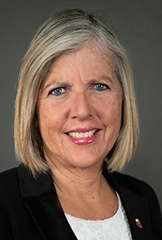
Appointment to the senate
- February 28, 2018
Professional background
- Commonwealth Games Canada: Executive Board Member & Chef de Mission (2012- ‑Present)
- Canadian Olympic Committee: Director, Executive Board (2009 – Present)
- Independent Consultant: Education consultation at the elementary and secondary school level (2016 – 2018)
- Waterloo Region District School Board: Superintendent & Executive Officer (2010 -‑ 2016); Principal (2000 – 2010)
Political and parliamentary roles
- Senate group: Independent Senators Group (2018 – Present)
Committee membership
- Member: Standing Committee on National Security, Defence and Veterans Affairs (2020 – Present); Standing Committee on Foreign Affairs and International Trade (2020 – Present); Standing Committee on Rules, Procedures and the Rights of Parliament (2022 – Present)
- Former Member: Standing Committee on Official Languages (2022 – 2022)
Recent points of interest
Russia:
- In June 2022, Senator Deacon expressed concern about the risk that Russia uses chemical weapons in Ukraine and asked what options are available to Canada and other signatories to the Chemical Weapons Convention if it does so.
- During the same meeting, she also expressed concern regarding physical violence on women and children by Russia in Ukraine and asked how Canada can help hold perpetrators accountable for sexual violence in Ukraine.
GAC ‘Fit for Purpose’:
- During the March 2023 visit to 125 Sussex, Senator Deacon asked what the Government learned from the pandemic with respect to emergency management, and what the connection is between the work at NORAD and similar sites and GAC’s Emergency Watch & Response Centre.
- In June 2022, the Senator stated based on the comments of previous witnesses that “there are too many supervisors and not enough leash to allow Canadian foreign affairs officers to operate independently and with autonomy in their postings.”
- She also asked what direction Canada should take as a middle power in its diplomacy given major changes on the international scene.
- Senator Deacon considers that the development aspect in diplomacy is very important for a rich, medium sized‑country like Canada. She regularly asks questions about Canada's development assistance efforts and resources.
Seized Russian Assets:
- In March 2022, Senator Deacon wanted to know how the Russian assets seized by the government will be used and if unfreezing of Russian assets could be a condition of any peace agreement.
Other interests
Afghanistan:
- In 2021, Senator Deacon was contacted by several athletes, coaches, sports leaders and leaders in the LGBTQ2+ community to help them get out of Afghanistan.
- In a Senate question period in February 2022, she also reiterated the importance of the work involved in getting Afghans out of Afghanistan.
Mohamed-Iqbal Ravalia
Independent Senators Group – Newfoundland and Labrador
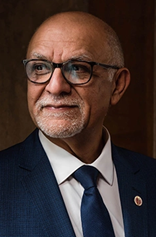
Appointment to the senate
- June 1, 2018
Professional background
- Studies: Medical degree (MB.ChB.) and a Certification in Family Medicine (CCFP)
- Medicine: Practiced family medicine in Twillingate, NL (1984 – 2018)
- Community Engagement: Involvement with local minor hockey, community outreach initiatives, and fundraising for the Lions Club and support of the Anglican Church Sunday school program.
Political and parliamentary roles
- Senate group: Independent Senators Group (2018 – Present)
- Member: Canada-Europe Parliamentary Association (2019 – Present)
Committee membership
- Member:Standing Committee on Foreign Affairs and International Trade (2020 – Present); Standing Committee on Fisheries and Oceans (2018 – Present); Standing Joint Committee on the Library of Parliament (2019 – Present)
- Former Member: Standing Committee on National Security and Defence (2022 – 2022)
Recent points of interest
GAC ‘Fit for Purpose’:
- During the March 2023 visit to 125 Sussex, Senator Ravalia asked what GAC is doing to attract “hyphenated-Canadians” so that we can reap the benefits of their language skills, cultural knowledge, etc.
- In November 2022, the Senator asked DND about their involvement with GAC in the development of the Indo-Pacific Strategy given the potential threats in that region of the world.
- In June 2022, he recognized the importance of modernizing Canada's diplomacy as well as modernizing its digital technologies to revitalize the foreign service. He asked if Canada has an infrastructure capable of addressing potential cybersecurity threats and whether it is working with its Fives Eyes allies on this issue.
- In April 2022, Senator Ravalia suggested that in the context of evolving global challenges, Canada appears to be under-represented in some jurisdictions, such as on the African continent.
Humanitarian aid to Ukraine:
- In June 2022, Senator Ravalia asked what Canada can do to help maintain an adequate supply of equipment and medicines to organizations assisting Ukrainians on the ground.
Space Industry and Cooperation:
- In May 2022, Senator Ravalia asked for more details about the memorandum of understanding signed by Canada and the United States concerning the cooperation on the civil Lunar Gateway. He also asked if there will be competition between private industry and this program in the long term.
Vaccine Equity:
- Senator Ravalia has been a strong advocate for the redistribution of COVID-19 vaccines to disadvantaged countries and has repeatedly called for Canada's involvement in vaccine distribution in needy and underdeveloped countries.
Yuen Pau Woo
Independent Senators Group – British Columbia

Appointment to the senate
- November 10, 2016
Professional background
- Research: Senior Fellow in Public Policy, Asian Institute of Research at The University of British Columbia (2014 – 2021); Senior Fellow, Asia Pacific Business Studies, Simon Fraser University (2014 – Present)
- Asia Pacific: President and CEO of the Asia Pacific Foundation of Canada (2005 – 2014); Distinguished East Asia Fellow at the Asia Pacific Foundation of Canada (2014 – 2021); President of China Global: The Vancouver Society for Promotion of Chinese Art and Culture (2014 – 2020)
Political and parliamentary roles
- Senate group: Independent Senators Group (2016 – Present)
- ISG Facilitator (2017-2021)
Committee membership
- Member:Standing Committee on Foreign Affairs and International Trade (2017 – Present); Standing Committee on Banking, Trade and Commerce (2021 – Present); Standing Committee on Rules, Procedures and the Rights of Parliament (2021 – Present); Standing Joint Committee for the Scrutiny of Regulations (2017 – Present); Standing Committee on Transport and Communications (2022-Present)
- Former Member: Committee of Selection (2019 – 2020); Standing Committee on Internal Economy, Budgets and Administration (2021 – 2022)
Recent points of interest
GAC ‘Fit for Purpose’:
- In June 2022, Senator Woo showed significant interest in the recruitment process for the foreign service and how to optimize it.
- Senator Woo has said he is in favour of greater recruitment into the Foreign Service of officials from other departments.
- During Minister Sajjan’s November 2022 appearance before the committee, the Senator suggested that GAC shouldrank the intrinsic global savvy and skills that some Canadians have‑ higher than we currently do, and place less emphasis on knowledge of French. As examples, he suggested foreign language ability, having lived abroad, and understanding cultures around the world.
Anti-Dumping and Countervailing Duties:
- In May 2022, Senator Woo underscored the importance of addressing anti-dumping and countervailing duties to protect producers and their workers and asked how the interests of consumers and importers of intermediate goods are addressed in these protectionist measures.
Russia Invasion of Ukraine:
- In April 2022, Senator Woo expressed dissatisfaction with the fact that the government seems to want the conflict in Ukraine to continue over the long term and asked what Canada is doing to try to negotiate a quick end to the war to reduce human suffering.
Russia Sanctions:
- In March 2022, Senator Woo noted his agreement with using the Magnitsky act to punish Russian leaders. However, he expressed some reluctance regarding SEMA and FACFOA, which he believes may not achieve the goal of changing the behavior of these Russian actors.
Amina Gerba
Progressive Senate Group – Quebec (Rigaud)

Appointment to the senate
- July 29, 2021
Professional background
- Studies: Bachelor’s degree in Business Administration and a Master’s degree in Business Administration
- Business: Co-founded two companies manufacturing hair and body care products: KarilissLaboratories Inc. and Kariderm
- Consulting: Founder (2003) of non-profit Afrique Expansion Inc., in order tobuild bridges between Canada and Africa, and encourage business opportunities
Political and parliamentary roles
- Senate group: Progressive Senate Group (2021 – Present)
- Member: Canada-Africa Parliamentary Association (2021 – Present); Canada-France Inter‑Parliamentary Association
Committee membership
- Member: Standing Committee on Foreign Affairs and International Trade (2021 – Present); Standing Committee on Human Rights (2021 – Present);
- Former Member: Standing Committee on Energy, the Environment and Natural Resources (2021 – 2022); Standing Committee on National Finance (2021 – 2022); Standing Committee on Social Affairs, Science and Technology (2021 – 2022); Standing Committee on Transport and Communications (2021 – 2022)
Recent points of interest
GAC ‘Fit For Purpose’:
- During the March 2023 visit to 125 Sussex, Senator Gerba sought details on Canada’s Africa Strategy, and what we know about how other countries are positioning themselves in Africa.
- In November 2022, the Senator criticized DND witnesses on their footprint in Africa, having been surprised to learn that one Defense Officer was covering 13 countries.
- In October 2022, she asked whether Canada’s whole diplomatic machinery should turn to economic foreign policy to avoid missing opportunities.
- In June 2022, Senator Gerba congratulated Canada for its membership in the African Development Bank. She went on however to deplore the reduction over the years of the Canadian diplomatic network on the continent and asked why a country like Canada, as one of Africa’s main donors, has such a small diplomatic network there.
- In April 2022, the Senator asked if there have been any significant changes as a result ofGAC's announced plan to increase its number of Black and Indigenous executives.
Global Food Crisis:
- In June 2022, Senator Gerba noted the global food issues related to the conflict in Ukraine and asked what role Canada can play in limiting this crisis particularly in the most affected African countries.
Trade Remedy System: SME
- In May 2022, Senator Gerba underscored the need to improve access to the trade remedy system for small and medium-sized enterprises and asked what actions have been taken by the government simplify access to the system for small and medium-sized businesses.
Bill S-217 (An Act respecting the repurposing of certain seized, frozen or sequestrated assets):
- In April 2022, Senator Gerba acknowledged the importance of this legislation, but expressed concern about the effects of such legislation on investment by foreign nationals in Canada.
Stephen Greene
Canadian Senators Group – Nova Scotia (Halifax – The Citadel)

Appointment to the senate
- December 22, 2008
Professional background
- Politics: Candidate for the Reform Party in the 1993 and 1997 federal elections; served as Chief of Staff to Preston Manning of the Reform Party of Canada (1993-‑ 1996)
- Insurance: He worked in the insurance industry and became engaged in national and international insurance issues (1996 – 2009)
- Foreign Service: Early in this career, he worked at the Canadian embassy in Washington D.C., and at the Canadian Consulate in Boston.
Political and parliamentary roles
- Senate groups: Conservative Party of Canada (2009 – 2017); Independent Senators Group (2017 ‑2019); Canadian Senators Group (2009 – Present)
- Deputy Liaison (2022 – Present)
- Deputy Government Whip in the Senate (2010 – 2015)
- Deputy Opposition Whip in the Senate (2016 – 2017)
Committee membership
- Member: Standing Committee on Foreign Affairs and International Trade (2019 – Present); Standing Committee on Rules, Procedures and the Rights of Parliament (2020 – Present); Standing Joint Committee for the Scrutiny of Regulations (2019 – Present)
- Former Member: Standing Committee on Banking, Trade and Commerce (2015 – 2017); Special Senate Committee on Senate Modernization (2017 – 2019); Standing Committee on Transport and Communications (2011 – 2013)
Recent points of interest
GAC ‘Fit For Purpose’:
- In June 2022, Senator Greene noted that the conflict in Ukraine will significantly change Canada's international policy and asked if GAC will be seeking the assistance of academics and experts to help adapt.
UN Update:
- In April 2022, Senator Greene mentioned the lack of relevance that the UN has in the conflict in Ukraine and whether Canada should have as an objective to initiate discussions and work on the creation of the “United Nations, Part II”.
Ukraine:
- Since the beginning of the conflict, Senator Greene has advocated for more aid to Ukraine as well as the imposition of a no-fly zone.
Free Trade Agreements:
- In May 2019, Senator Greene stated that he was in favour of free trade agreements because they benefit Canada, our trading partners, and the global economy in general.
David Richards
Canadian Senators Group – New Brunswick
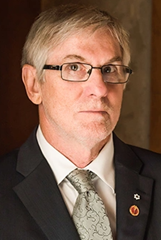
Appointment to the senate
- August 30, 2017
Professional background
- Novelist, essayist, screenwriter and poet.
- Recognition: In 2007, he was awarded the regional Commonwealth Writers’ Prize award. He is also a member of the Order of New Brunswick and the Order of Canada.
Political and parliamentary roles
- Senate groups: Independent Senators Group (2017 – 2018); Non-affiliated (2018-‑ 2019); Canadian Senators Group (2019 – Present)
- Member: Canada-Europe Parliamentary Association(2019 – Present)
Committee membership
- Member: Standing Committee on Foreign Affairs and International Trade (2021 – Present); Standing Committee on National Security and Defence (2017 – Present); Standing Senate Committee on National Security, Defence and Veterans Affairs (2021 – Present);
- Former Member: Standing Committee on Indigenous Peoples (2013 – 2015); Standing Committee on National Finance (2019 – 2022); Standing Committee on Transport and Communications (2020 – 2021)
Recent points of interest
Afghanistan:
- In June 2022, Senator Richards showed a strong interest in Canada's relationship with Afghanistan, particularly with respect to immigration issues and Afghan employees working at the Canadian embassy.
Russia:
- In June 2022, Senator Richards wanted to know if a diplomatic approach was still possible with Russia and if there are discussions behind the scenes to calm the situation.
Ukraine:
- Senator Richards has been in favour of imposing a no-fly zone in Ukraine and providing more military aid from Western countries.
GAC ‘Fit for Purpose’:
- In April 2022, Senator Richards deplored the state of Canada’s military, suggesting that greater collaboration between GAC and DND would improve the situation from a defence and security perspective.
Leo Housakos
Conservative Party of Canada – Quebec (Wellington)
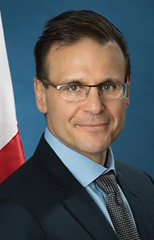
Appointment to the senate
- December 22, 2008
Professional background
- Studies: Bachelor’s degree in Business Administration
- Business: Had a career in business, served two terms as Vice-President of the Hellenic Congress of Quebec and as a founding member of the Hellenic Board of Trade of Metropolitan Montreal
Political and parliamentary roles
- Senator Group: Conservative Party of Canada (2009 – Present)
- Deputy Whip of the Opposition(2020 – Present)
- Speaker of the Senate(2015)
- Speaker Pro Tempore(2014 – 2015)
Committee membership
- Chair: Standing Committee on Transport and Communications (2021 – Present)
- Member:Standing Committee on Foreign Affairs and International Trade (2009 – 2021/2022 – Present); Standing Committee on Transport and Communications (2009 – 2016/2021 – Present); Committee of Selection (2021- Present)
- Former Member: Standing Committee on Internal Economy, Budgets and Administration (2013 – 2016); Standing Committee on Rules, Procedures and the Rights of Parliament (2017 – 2019);Standing Committee on Rules, Procedures and the Rights of Parliament (2009 – 2022); Special Joint Committee on the Declaration of Emergency (2022 – 2022)
Recent points of interest
GAC ‘Fit For Purpose’:
- During the March 2023 visit to 125 Sussex, Senator Housakos asked what the Department needs to do to address perceived gaps in intelligence gathering, defense against cyber-attacks and theft of intellectual property at a level equivalent to our allies in the US, UK and France.
Sanction Regime:
- In May 2022, Senator Housakos introduced Bill S-247 An Act to amend the Justice for Victims of Corrupt Foreign Officials Act (Sergei Magnitsky Law).
- During a debate on Bill S-217, An Act respecting the repurposing of certain seized, frozen or sequestrated assets, in June 2022, Senator Housakos spoke in favor of the bill by mentioning that “it will further strengthen the Magnitsky Act and strengthen our ability as a country to properly deal with corruption and human rights abuses around the world”.
Foreign Interference:
- In October 2022, Senator Housakos spoke to an increase of foreign interference in Canada and asked witnesses what kind of legislation would identify and protect Canada in this regard.
Afghanistan:
- In October 2022, Senator Housakos deplored what he described as Canada having let down our friends and supporters in Afghanistan, asking if the failure was because of a lack of intelligence or because of an error from GAC or IRCC.
Michael L. MacDonald
Conservative Party of Canada – Nova Scotia (Cape Breton)
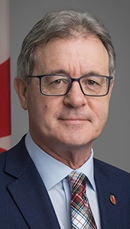
Appointment to the senate
- January 2, 2009
Professional background
- Studies: Bachelor’s degree in Political Science and History
- Provincial Politics: He ran twice provincially for the Nova Scotia Progressive Conservative Party in 1993 and 1998
- Business: President and owner of the Fortress Inn Louisbourg (1988 – Present)
Political and parliamentary roles
- Senate Group: Conservative Party of Canada (2013 – Present)
- Co-chair:Canada-US Inter-Parliamentary Group (2019 – Present)
- Treasurer:Canada-Korea Inter-Parliamentary Friendship Group (2020 – Present)
Committee membership
- Chair: Committee of Selection (2021 – Present)
- Member: Standing Committee on Foreign Affairs and International Trade (2009 – Present);
- Former Member: Standing Committee on Transport and Communications (2015 – 2017 | 2020 – 2021); Standing Committee on Energy, the Environment and Natural Resources (2017 – 2019)
Recent points of interest
GAC ‘Fit for Purpose’:
- In June 2022, Senator MacDonald asked about the impact of selecting non-career diplomats as ambassadors.
UN – Ukraine:
- Since the beginning of the conflict in Ukraine, Senator MacDonald has on several occasions raised concerns about the impact of the conflict on the functioning of the UN.
China:
- Senator MacDonald has shown particular concern about China's intentions. In April 2022, he posited that China is currently learning from the conflict in Ukraine about tactical and operational matters.
Agriculture Producers:
- In March 2020, Senator MacDonald expressed his concern about the impact of the Carbon Tax, which he said would make it difficult for Canadian agriculture to compete with American producers in a free trade environment.
The United Kingdom’s Accession to the CPTPP
Top Line Messages
- The Comprehensive and Progressive Agreement for Trans-Pacific Partnership is a key platform for Canada’s long-term economic security.
- Canada supports the expansion of the Agreement through the accession of new members that meet the CPTPP’s high standards and is pleased to have concluded the United Kingdom accession process.
- The United Kingdom’s accession to the CPTPP will reinforce the economic and geopolitical importance of the Agreement and complement the preferential access Canadians already enjoy under the Canada-United Kingdom Trade Continuity Agreement (TCA).
Supplementary Messages
- CPTPP Parties and the United Kingdom are now undertaking their respective domestic ratification processes to bring the United Kingdom Accession Protocol into force.
- CPTPP Parties have not made a decision on other accession applicants.
- Members are committed to ensuring that future accessions are managed in an efficient and fair manner that maintains the high quality of the agreement and is attractive to aspirant economies.
Responsives
Responsive: Will the government table legislation to ratify the United Kingdom’s accession?
- Canada’s ratification of the United Kingdom Accession Protocol is ongoing – exact timing to introduce legislation in Parliament has not been determined.
- We are aware that the Canadian meat sector has expressed strong concerns. We continue to work with this sector to address their concerns.
Responsive: What happens if the United Kingdom Accession Protocol enters into force without Canada having ratified it?
- If the United Kingdom Accession Protocol enters into force without Canada completing its domestic ratification process, the United Kingdom will become a Party to the Agreement once the requisite number of CPTPP Parties complete their respective processes.
- The market access commitments within the Accession Protocol will only be applicable between the United Kingdom and those Parties that have ratified.
- In such a scenario, Canada would not be bound by the terms of the Accession Protocol until its domestic ratification process is completed.
Responsive: the meat sector opposes the United Kingdom’s accession to the CPTPP (“Say No To A Bad Deal” campaign)
- Bringing an ally like the United Kingdom into this Agreement does not mean Canada has taken a step back from advancing the interests of these Canadian exporters.
- The Government of Canada will closely monitor the United Kingdom’s implementation and compliance to the CPTPP’s SPS Chapter.
- In addition, Canada continues to undertake technical work with the United Kingdom to address specific issues to facilitate market access for Canadian agricultural products.
- Canada is engaging with the United Kingdom to remedy trade irritants in the pork sector, based on the priorities set by the meat sector.
- Beef and pork producers have historically been amongst the largest beneficiaries of Canada’s ambitious FTA negotiation agenda, and the CPTPP has opened significant opportunities in high growth markets in the Indo Pacific region – which industry has identified as a priority region for exports.
- Since the CPTPP entered into force in 2018, Canada’s beef exports to CPTPP members have increased by 156.3% in value and 117.1% in quantity, compared to a 69.3% increase in value and 27.9% increase in quantity in Canada’s beef exports globally.
Responsive: Canada’s position on other accession applicants (China, Taiwan, Ecuador, Costa Rica, Uruguay, Ukraine)
- The CPTPP is designed for expansion and Canada is supportive of an efficient accession process.
- Canada welcomes the accession of economies that are willing and able to meet the Agreement’s high standard rules and market access commitments, have a demonstrated history if complying with their existing trade commitments, and can achieve the consensus of CPTPP Parties.
- All accession-related decisions are made by consensus among Canada and other CPTPP Parties.
- Canada’s position on any aspirant economy will always be guided by what is in the best interest of Canadians.
Responsive: Ukraine’s CPTPP accession application
- In May 2023, Ukraine submitted a notification to accede to the CPTPP.
- To join the CPTPP, any interested economy must demonstrate that it is willing and able to meet the Agreement’s high standard rules and market access commitments, have a demonstrated history if complying with their existing trade commitments, and can achieve the consensus of CPTPP Parties.
- With the Canada-Ukraine FTA modernization, Ukraine is demonstrating its commitment to advance rules-based trade.
- CPTPP accession would benefit Ukraine in three ways:
- It would improve commercial, political, and people-to-people links between Ukraine and the dynamic economies of the CPTPP.
- It would lower the costs of goods and services, making Ukraine more competitive in the global marketplace.
- CPTPP accession would send a powerful signal to the world that Ukraine is strong and open for business.
Update
Following the signing of the United Kingdom Accession Protocol on July 16, CPTPP Parties and the United Kingdom are now undertaking their respective domestic ratification processes to bring the United Kingdom. Accession Protocol into force. The CPTPP United Kingdom Accession Protocol will enter into force under a “universal” approach, 60 days after the United Kingdom and all of the Parties have ratified the Protocol. In the event that not all Parties and the United Kingdom have ratified within a period of 15 months, the approach pivots to “critical mass”, and the Accession Protocol will enter into force 60 days after both the United Kingdom and at least six Parties to the CPTPP have ratified, for the United Kingdom and Parties that have ratified the Accession Protocol. Japan and Singapore are the only CPTPP Parties to have completed their domestic ratification processes to date. Timelines for Canada’s ratification of the Accession Protocol have yet to be determined.
If the United Kingdom Accession Protocol enters into force without Canada completing its domestic ratification process, the United Kingdom will become a Party to the CPTPP. The market access commitments within the Accession Protocol will only be applicable between the United Kingdom and those Parties who have ratified. In such a scenario, Canada would not be bound by the terms of the Accession Protocol as long as its domestic ratification process is not completed. If Canada were to complete its domestic ratification process after the Accession Protocol has entered into force, the Accession Protocol would enter into force for Canada 60 days after completing its ratification.
Supporting Facts and Figures
- With the United Kingdom, a fully implemented CPTPP includes three G7 economies, covers more than 15% of global GDP (an increase from 12.4% without the United Kingdom), and comprises around 590 million consumers.
- The United Kingdom accession to the CPTPP establishes a single set of rules between Canada, the United Kingdom and other Parties to the Agreement, integrating the United Kingdom into CPTPP supply chains and making trade more transparent, predictable and accessible for Canadian businesses.
- Adding the United Kingdom to the CPTPP will create a stronger bulwark against authoritarian threats in the Indo-Pacific region, including countering the rise of protectionism, unfair trade practices, and economic coercion.
Background
On February 1, 2021, the United Kingdom became the first economy to submit its application to accede to the CPTPP. On June 1, 2021, Canada and its CPTPP partners agreed by consensus to start the process for the United Kingdom to join the CPTPP. Through an Accession Working Group established in September 2021, the United Kingdom worked with Parties to demonstrate that its regulatory regime complies with the rules of the Agreement. On March 30, 2023, CPTPP Parties and the United Kingdom announced the substantial conclusion of accession negotiations. At a signing ceremony on July 16, CPTPP Parties officially welcomed the United Kingdom as the Agreements 12th member, and first and only successful accession candidate.
Canadian beef and pork stakeholders (Canadian Cattle Association, Canadian Meat Council, National Cattle Feeder’s Association and Canadian Pork Council) oppose the United Kingdom’s accession to the CPTPP and launched the “Say No To A Bad Deal” campaign following the conclusion of the accession negotiations (the Canadian Pork Council joined the campaign on February 12, 2024). [REDACTED]
Canada-U.K. Free Trade Negotiations
- On January 25, 2024, the U.K. unilaterally paused bilateral negotiations with Canada.
- Canada and the U.K. have engaged in 8 rounds of negotiations since the launch in March 2022.
- Canada remains ready to engage further with the U.K. towards a bilateral agreement.
Supplementary Messages
- The U.K.’s decision to pause bilateral negotiations came as a surprise, as discussions were making progress in many key areas and a 9th negotiating round was scheduled to take place in February.
- The U.K. cited dissatisfaction with Canada’s willingness to extend the expiring cheese access and rules of origin provisions as rationale for the pause.
- Canada will only negotiate an agreement that delivers for Canadian businesses, farmers, and workers. In addition, we continue to be clear that Canada will fully defend the supply management system and not provide any additional market access in these sectors.
- Canadian producers and exporters will continue to benefit from preferential trade under the Canada – U.K. Trade Continuity Agreement, as it does not expire.
Supporting Facts And Figures
- The U.K. is Canada’s third most important trading partner and our largest trading partner in Europe.
- Two-way Canada–U.K. trade in goods and services equalled approximately $46.5 billion CAD in 2022.
- The Trade Continuity Agreement ensures 99% of trade between Canada and the U.K. is duty-free.
Background
The Canada-United Kingdom Trade Continuity Agreement (TCA) entered into force on April 1, 2021. The agreement preserves the main benefits of the CETA, which no longer applied to the U.K. when it left the EU. Under the TCA, which does not expire, Canada and the U.K. committed to begin negotiations on a comprehensive bilateral FTA. Since negotiations were launched in March 2022, 8 rounds have been held. While Round 9 was scheduled for February 2024, on January 25, 2024, the U.K. paused our bilateral negotiations, citing Canada’s position on expiring TCA provisions related to cheese and rules of origin. Minister Ng has noted publicly and privately to U.K. Secretary of State for Business and Trade (SoS) Kemi Badenoch Canada’s disappointment with the U.K.’s decision and has affirmed that Canada remains prepared to restart negotiations. Should the U.K. return to the negotiating table, it is anticipated that negotiations would not conclude until after the U.K.’s general election (expected in Fall 2024).
In addition to bilateral negotiations, the U.K. and CPTPP Parties signed the CPTPP U.K. Accession Protocol on July 16, 2023. The U.K. and CPTPP Parties must now complete their respective domestic ratification processes to bring the Accession Protocol into force. A public consultation was held in March and April 2021 on both prospective negotiations. Canadians across a broad range of sectors indicated support for both initiatives to ensure a strong, more competitive economic relationship with the U.K.
In 2022, the United Kingdom was Canada’s third largest trading partner for combined goods and services, behind the United States and China. In 2022, Canada and the U.K. traded $46.5 billion in combined goods and services. Overall, Canada had a trade surplus with the U.K. in 2022 as Canada exported $27.3 billion in goods and services. The U.K. was Canada’s second largest trading partner for services in 2022 behind only the United States.
Private Member’s Bill C-282: An Act to Amend the Department of Foreign Affairs, Trade and
Development Act (supply management)
- Bill C-282 is consistent with the longstanding Government of Canada policy to defend the integrity of Canada’s supply management system.
- With the support of the Government, the Bill was adopted by the House of Commons at Third Reading on June 21, 2023.
Supplementary Messages
- The Bill is also consistent with commitments made by the Prime Minister to not provide any new market access on these products in future trade negotiations.
Update
The Bill was introduced in the Senate at First Reading on June 21, 2023. To date, five debates (September 26, October 18 and 24, November 2 and 30, and February 8) have been held during Second Reading in the Senate. Second Reading debate will continue at a yet to be determined date.
Supporting Facts And Figures
- Stakeholders from the supply-managed sectors expressed their support through written submissions and witness testimony at the Standing Committee on International Trade (CIIT).
- On the other hand, opposition to the Bill was expressed by certain Members of Parliament and export-oriented industry stakeholders. Expressed concerns focused on the unintended consequences of the Bill for Canada’s international trade agenda, in particular vis-à-vis the United Sates.
- In particular, opposing stakeholders considered that: (1) the Bill would limit Canada’s negotiating capacity with new partners and existing partners, in particular the United States should it seek new concessions in the context of the 6-year review of CUSMA; (2) the Bill would set a precedent for other sectors to seek similar protection; and (3) the Bill could restrict the Crown Prerogative on the Minister of Foreign Affairs in conducting international affairs.
Background
PMB C-282 is a Bloc Québécois bill introduced by MP Luc Thériault (Montcalm). The Bill seeks to amend the Department of Foreign Affairs, Trade and Development Act such that the Minister of Foreign Affairs cannot, on behalf of the Government of Canada, make any new commitment in an international treaty that would have the effect of increasing tariff rate quota (TRQ) volumes or reducing over-quota tariff rates for dairy products, poultry or eggs (supply-managed goods). The Bill would apply to negotiations towards new free trade agreements (FTAs) or renegotiating existing FTAs.
Canada’s approach in its FTAs has been to seek the elimination of tariffs on the vast majority of goods, while seeking to exclude the most sensitive agriculture goods from tariff commitments, including products covered by supply management. New market access commitments for supply-managed products have been undertaken in only three FTAs: the Canada-European Union Comprehensive Economic and Trade Agreement (CETA), the Comprehensive and Progressive Agreement for Trans-Pacific Partnership (CPTPP), and the Canada-United States-Mexico Agreement (CUSMA). Such commitments were accepted only where it was deemed necessary to conclude trade agreements that were in Canada’s overall economic interests. While new access for supply-managed products was provided in those agreements, the integrity of the supply management system itself, including its three pillars (pricing, production, and import controls), was fully maintained.
Israel-Gaza Conflict
Top Line Messages
- Reiterate call for increased humanitarian assistance into Gaza and for an immediate humanitarian ceasefire.
- Condemn Hamas’ terrorist attacks against Israel on October 7th and call for the immediate release of all hostages.
Supplementary Messages
- Deeply concerned by the dire humanitarian situation in Gaza and the impact on civilians.
- To date, Canada has announced $100 million in humanitarian assistance to address the urgent needs of vulnerable civilians in this crisis.
- We continue to call on all parties to uphold international humanitarian law and protect civilians.
- Gravely concerned by indications that Israel is planning a ground offensive into Rafah.
- This could have devastating humanitarian impacts for the more than 1.5 million civilians taking refuge there.
- Canada has one of the strongest export controls systems in the world, respect for human rights is enshrined in our export control legislation.
- All permit applications are reviewed on a case-by-case basis under Canada’s robust risk assessment framework.
- For confidentiality reasons, we do not comment on individual permit or permit applications.
- Allegations against UNRWA staff members are deeply alarming and we are taking them extremely seriously.
- Canada announced on January 26 a temporary pause in additional funding.
- Currently working with the UN and other donors as UNRWA undertakes an investigation into the allegations.
- Canada continues to provide humanitarian assistance through other partners on the ground.
Update
Israeli Military Operations in Rafah: In response to Israeli military operations in north and central Gaza, more than half of the population have fled to the southern city of Rafah, at the border with Egypt. Since most remaining Hamas fighters are also presumed to be hiding in Rafah, Israel considers military operations there as critical to eliminate Hamas. However, there are widespread concerns among the international community that military operations in Rafah would 1) significantly increase the number of casualties, 2) undermine the humanitarian effort with the departure of aid workers and reduced humanitarian crossings, and 3) push Gazans to seek refuge across the border in Egypt.
Supporting Facts and Figures
- On February 14, PM Trudeau issued a joint statement with New Zealand and Australia counterparts on Israeli military’s planned operations in Rafah.
- On January 26, MINE announced that Canada would temporarily pause any additional funding to UNRWA
- On January 26, MINA issued a statement regarding the ICJ’s decision on South Africa’s request for provisional measures in its case against Israel.
- Export permits issued since October 7, 2023, have been for non-lethal equipment.
- Since 1991, Canada has not received any requests for, and therefore has not issued, any permits for major conventional arms or light weapons to Israel.
- 2023 Reports on the administration of the Export and Import Controls Permits Act and on the exports of military goods must be tabled in Parliament by May 31, 2024.
Background
Israel-Hamas Conflict: On October 7, Hamas launched an attack on Israel in which 1,139 people were killed and over 240 were taken hostage. In response, Israel launched a military campaign in the Gaza Strip with the stated objectives of eliminating Hamas and rescuing the hostages. More than four months of fighting have left more than 29,000 Palestinians dead and 90% population of Gaza food insecure.
Canadian arms exports to Israel: Maintaining international peace and security and protecting human rights are central to Canada's foreign policy. Canada has one of the most rigorous export control systems in the world, harmonized with those of our allies and partners under the major export control regimes. Canada’s accession to the Arms Trade Treaty (ATT) in 2019 has further strengthened this approach. All permit applications for controlled items, including those destinated to Israel, are reviewed on a case-by-case basis as part of a robust risk assessment, including against ATT criteria, which have been enshrined in the Export and Import Permits Act (EIPA). Canada’s missions abroad are consulted as part of the export permit review process, considering the local and regional situation and associated security risks.
Ukrainian Legislative Process
Top Messages/Talking Points:
- Both the Canadian and Ukrainian governments are committed and working to finish their domestic processes for the ratification and entry into force of the treaty as quickly as possible.
- The Ukrainian legislative process is much more streamlined than the Canadian process.
- The Government of Canada expects that Ukraine will be flagging CUFTA as priority legislation.
- If pressed: in the last update GAC received from Ukraine, the bill was introduced in the Ukrainian Parliament on December 29, 2023 and referred for consideration to their Parliamentary Committee on Foreign Policy and Inter-Parliamentary Cooperation.
Differences Between Canadian and Ukrainian Legislative Processes
- Main difference is that, whereas Canada has two chambers of parliament, Ukraine only has one, the Verkhovna Rada.
- In Canada, each house has three readings, committee stage and report stage and can only give Royal Assent after all stages are complete. In Ukraine, although the process allows for up to three readings of a bill, a majority vote can result in the passage of the bill after the first reading in the Verkhovna Rada.
- Priority legislation can also be flagged for urgent consideration by the President or Cabinet, to ensure quick passage.
Steps Ukrainian Legislative Process
Broadly, there are three steps in Ukraine’s legislative process:
- An administrative or Cabinet stage
- If pressed:
- Preparation of a legislative and ratification package by Ukrainian Ministry of Foreign Affairs
- Submission and approval of the legislative package to the Office of the President and/or Cabinet
- A parliamentary stage
- If pressed:
- Draft legislation is assigned to a parliamentary committee responsible for the subject matter of the bill.
- The committee reviews the bill and can either adopt the bill and approve it for first reading, or reject it.
- If adopted, it is sent for inclusion on the agenda of the plenary session of the Verkhovna Rada, where it is debated and voted on.
- The bill can be passed as a whole at this stage, OR passed at first reading, after which it would repeat the committee stage and plenary session at a second reading, and can repeat again for a third reading – but third readings are rare.
- Once passed as a whole, it is signed by the speaker of the Verkhovna Rada and sent to the office of the President.
- A signature, publication, and entry into force stage
- If pressed:
- Once the President receives the law, they can either sign and adopt the law or veto it.
- Once signed, the law is published on the official newspaper of the Verkhovna Rada and enters into force upon publication (unless otherwise stipulated by the law).
Additional Sources:
- Prime Minister announces more support for Ukraine | Prime Minister of Canada (pm.gc.ca)
- On International Agreement... | on June 29, 2004 № 1906-IV (rada.gov.ua)
Annex: Document Received from Canada’s Embassy in Kyiv
Law-making process in the Verkhovna Rada
Initiation/registration of a draft law
The right to a legislative initiative (to register a bill) belongs to:
- MP, or group of MPs;
- Cabinet of Ministers;
- President.
Traditionally, in the Ukrainian parliament the overwhelming majority of the draft laws (up to 90%) are initiated by MPs.
After a draft is registered, there is 14-day period when an alternative draft on the same issue can be initiated.
Review by the responsible committee
Each draft law is assigned to a certain parliamentary committee responsible for the subject matter of this legal initiative. This committee becomes a leading responsible committee to consider and approve the draft for the plenary session.
Other relevant committees (for instance, Budgetary or European Integration Committee), as well as parliamentary Scientific and Expert Department and Legal Department can also review and provide their opinion on a draft.
The leading responsible committee reviews the bill and all the recommendations and has the power to either adopt the draft law and approve it for the first reading, or to reject it.
Most stakeholder/citizen engagement (consultations, public hearings, round tables) happens on the level of committee work.
Inclusion in the plenary agenda
After the leading committee approves the draft for the first reading, it needs to be included into the agenda of the next plenary session.
Agenda for the plenary is set during the Conciliatory Board meetings - a meeting of the leadership of parliament and heads of factions/groups to discuss agenda for the plenary sessions and other organizational aspects of parliamentary work; usually convened before each plenary session.
Consideration during the plenary session
When the draft ends up on the agenda of a plenary session, it is debated and requires a simple majority of MPs (226) to be adopted, except for certain category of bills that require a constitutional majority (300).
Parliament can either pass the bill as a whole, or adopt it in the first reading only, returning it to the responsible committee for additional work before the second reading (same committee procedure). There is also a third reading option, but was hardly ever used in the history of Rada.
Speaker’s signature
The adopted bill shall be signed by the Speaker of the Verkhovna Rada.
President’s signature
The President either signs the adopted law or imposes veto.
Publication of the law
The signed laws are published in the official newspaper of the Verkhovna Rada and on its website. A law enters into force from the time of its publication, unless another period for entry into force is stipulated in the text of the law.
Implementation of the law
After a law is adopted, Cabinet of Ministers (the executive branch) is responsible for developing necessary by-laws for its implementation.
- Date modified: